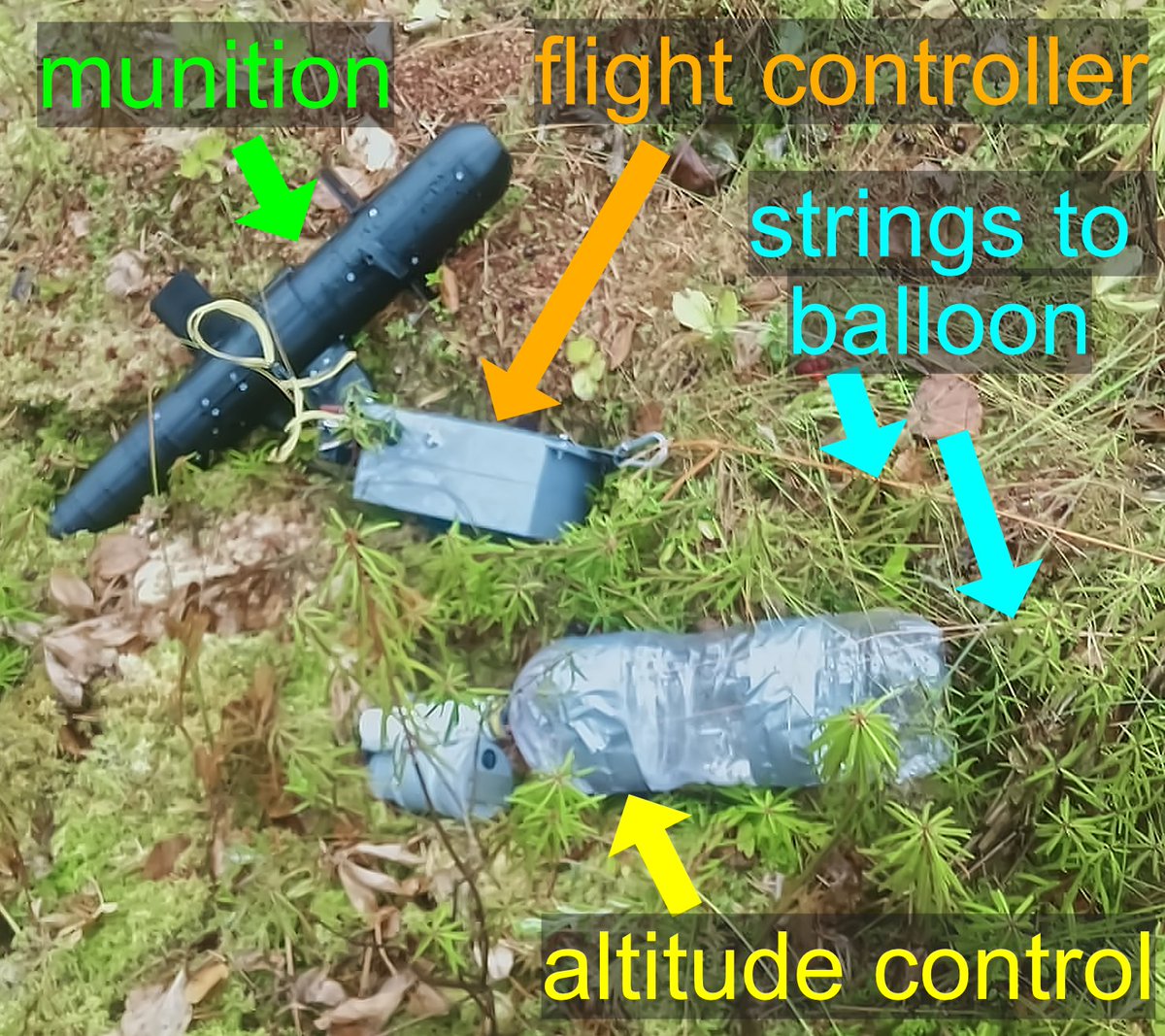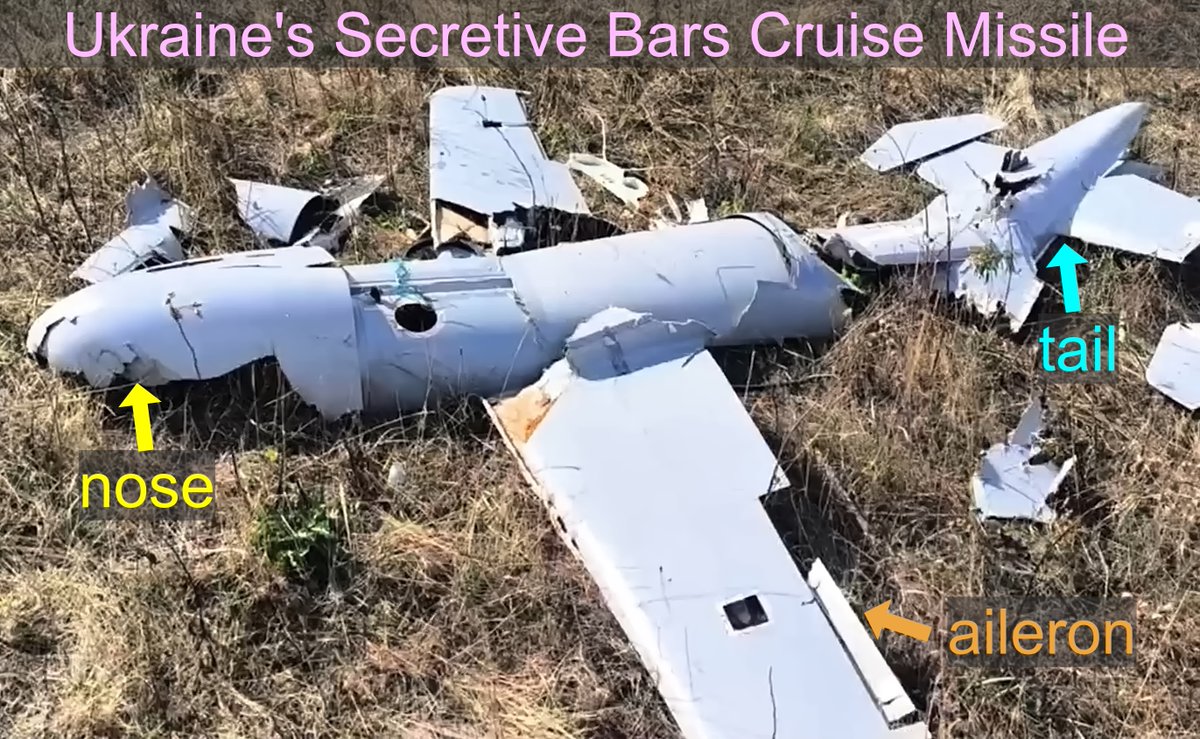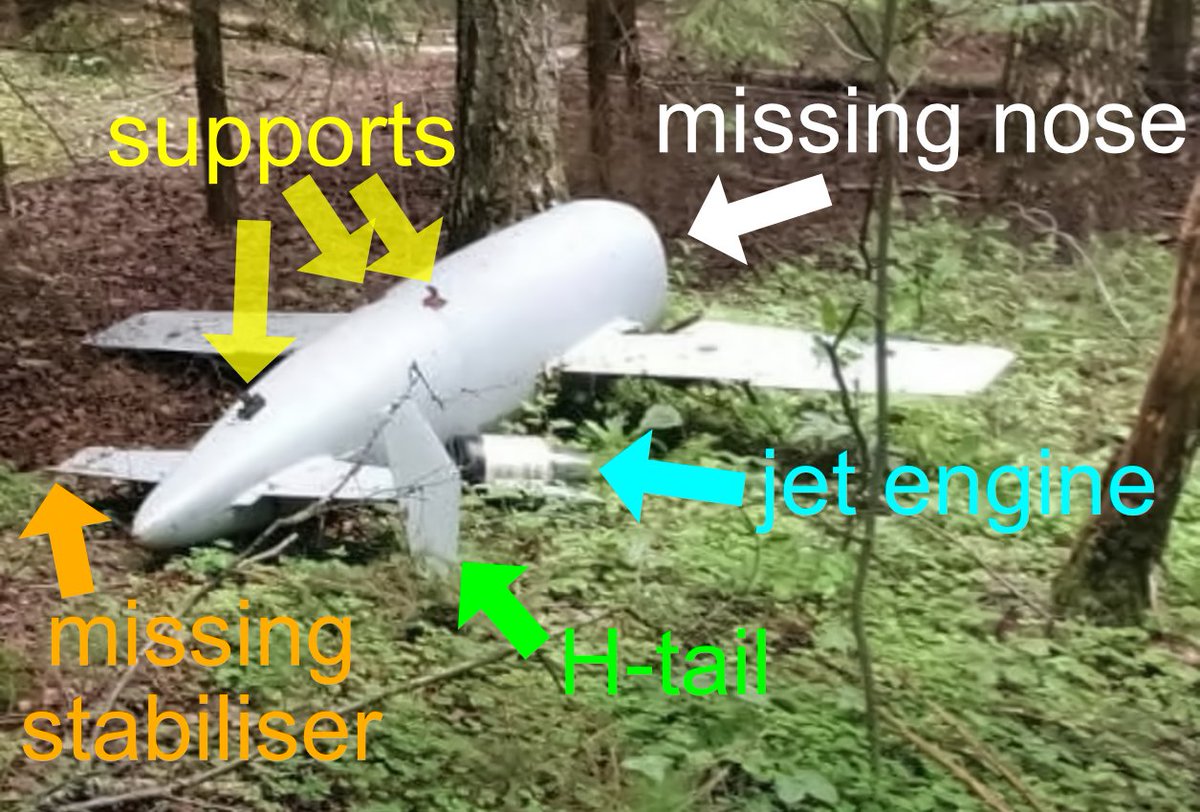1. A precision munition carried by a Ukrainian #balloon? Ukraine has been using balloons for several months to bomb russia. One problem has been how to guide the bomb to a useful target. This may be Ukraine’s solution. 

2. This weapon is easily recognised as balloon-borne from the strings attaching the payload to the balloon. Also, the water bottle used for altitude control has been seen on previous balloons. 

3. A water bottle is used to control the balloon’s altitude. The altitude controller can release water as required. There is a USB port, likely for programming and charging but interestingly there is no connection to the flight controller. 

4. The flight controller hangs above the munition. There is a release servo but the mechanism is hard to see. The controller’s case & bracket are standard off-the-shelf. Internal electronics are unknown at this point. The controller would need a list of possible targets. 

5. The munition is nicely 3D-printed. There are 4 steering fins mounted directly to servos. Since the final target is one of many possible, the wires are likely to charge the munition & program it with the target’s location. Guidance could be GPS or inertial or both. 

6. It will be interesting to see how effective this weapon is. At a minimum it would consume a lot of russian air defense resources. If you liked this thread, please bookmark it and repost as a quote. Also, please see my previous threads listed under “Highlights”.
• • •
Missing some Tweet in this thread? You can try to
force a refresh






















